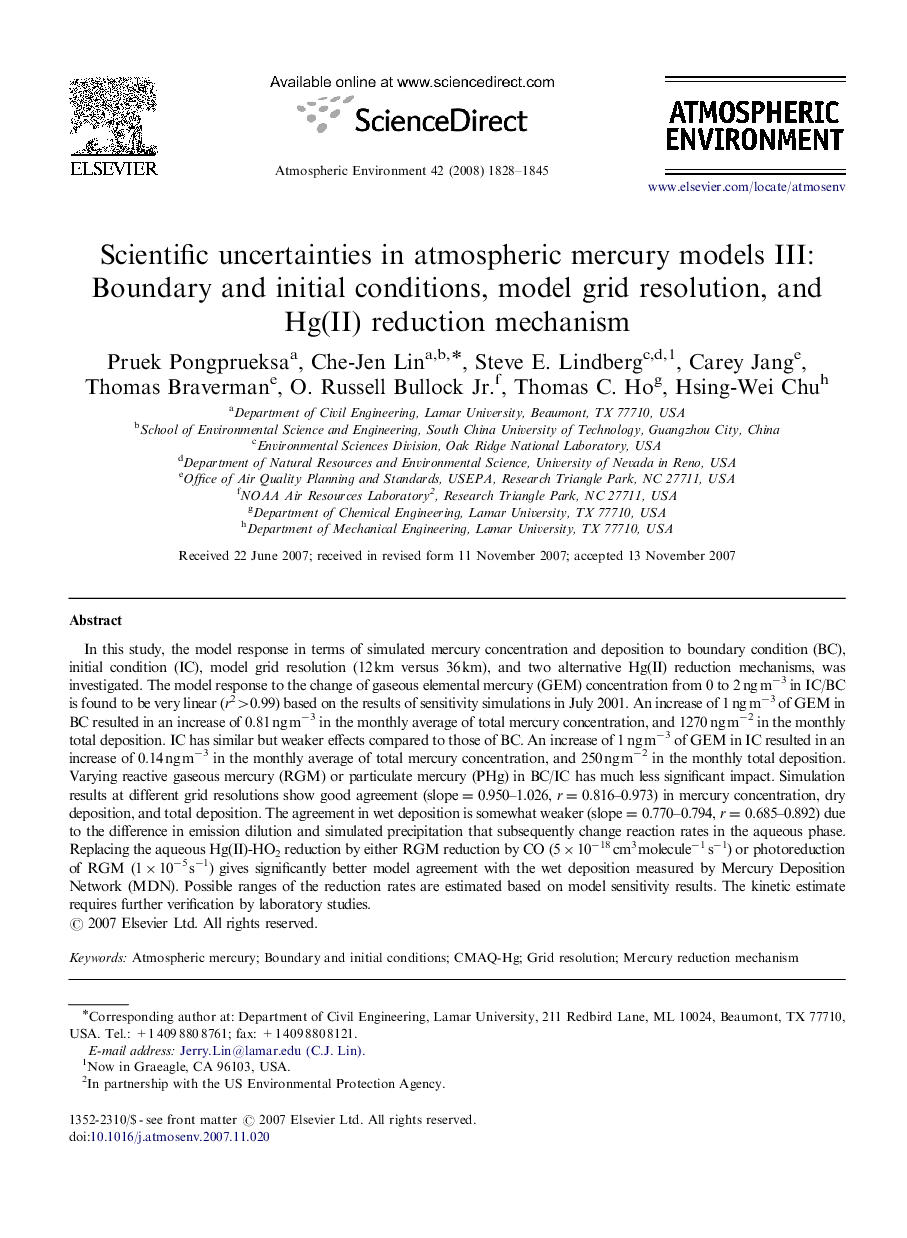| کد مقاله | کد نشریه | سال انتشار | مقاله انگلیسی | نسخه تمام متن |
|---|---|---|---|---|
| 4443055 | 1311176 | 2008 | 18 صفحه PDF | دانلود رایگان |

In this study, the model response in terms of simulated mercury concentration and deposition to boundary condition (BC), initial condition (IC), model grid resolution (12 km versus 36 km), and two alternative Hg(II) reduction mechanisms, was investigated. The model response to the change of gaseous elemental mercury (GEM) concentration from 0 to 2 ng m−3 in IC/BC is found to be very linear (r2>0.99) based on the results of sensitivity simulations in July 2001. An increase of 1 ng m−3 of GEM in BC resulted in an increase of 0.81 ng m−3 in the monthly average of total mercury concentration, and 1270 ng m−2 in the monthly total deposition. IC has similar but weaker effects compared to those of BC. An increase of 1 ng m−3 of GEM in IC resulted in an increase of 0.14 ng m−3 in the monthly average of total mercury concentration, and 250 ng m−2 in the monthly total deposition. Varying reactive gaseous mercury (RGM) or particulate mercury (PHg) in BC/IC has much less significant impact. Simulation results at different grid resolutions show good agreement (slope=0.950–1.026, r=0.816–0.973) in mercury concentration, dry deposition, and total deposition. The agreement in wet deposition is somewhat weaker (slope=0.770–0.794, r=0.685–0.892) due to the difference in emission dilution and simulated precipitation that subsequently change reaction rates in the aqueous phase. Replacing the aqueous Hg(II)-HO2 reduction by either RGM reduction by CO (5×10−18 cm3 molecule−1 s−1) or photoreduction of RGM (1×10−5 s−1) gives significantly better model agreement with the wet deposition measured by Mercury Deposition Network (MDN). Possible ranges of the reduction rates are estimated based on model sensitivity results. The kinetic estimate requires further verification by laboratory studies.
Journal: Atmospheric Environment - Volume 42, Issue 8, March 2008, Pages 1828–1845